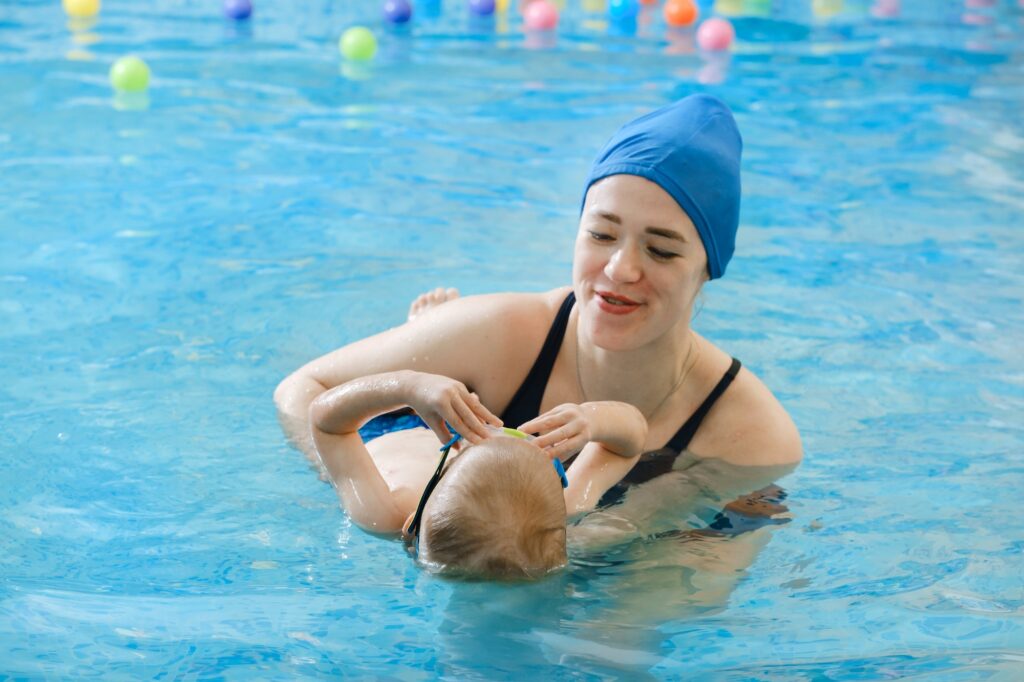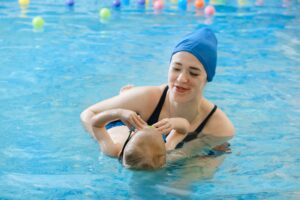
Swimming is a great activity for both kids and parents. It’s also one of the best ways to keep your child safe while they learn how to swim. Learning how to swim is a gradual process, so teaching your child to do so at an early age will help them build confidence and develop the necessary skills for staying safe in water as they grow older. Here are some ways you can start teaching your toddler to swim with ease and enjoyment.
Swimming Helps Build Confidence & Self-Reliance
The process of learning how to swim will naturally increase your child’s confidence. You might be tempted to rush your child into the water, but this will only cause them to become anxious. Instead, try to take it slowly and ensure that your child has a sense of control over the situation. A great way to do this is to have your child practice swimming in shallow water. Shallow water is much less intimidating than deep water, and it will allow your child to build confidence and learn how to swim in a safe environment.
If you can make it a daily activity, you can encourage your child to build their confidence and practice self-reliance skills. Swimming is a great opportunity to talk to your child about their fears, too. If your child is scared of the water, you can help them overcome their fears by swimming with them. You can also take time to talk to your child about the things they might be afraid of, like sharks or jellyfish. By understanding their fears and discussing them, you can help your child make sense of these things, and see them as parts of the natural environment, not as threats to their safety.
It’s Good for Your Child’s Muscles, Balance & Coordination
Swimming is an incredibly active sport that engages your child’s muscles and develops balance, coordination, and strength in a fun and active way. By practicing swimming daily, your child will become more coordinated and physically fit as they grow up. This will also help your child learn to stay active and engaged in their daily lives.
Swimming is a great cardiovascular exercise that also strengthens your child’s muscles. Swimming will help your child build strong muscles in their arms, legs, and core. These muscles are important for basic activities like walking, running, and climbing. Having strong muscles reduces the risk of problems like childhood obesity or asthma.
It Reduces Stress and Improves Concentration & Memory
Swimming is a physically and mentally stimulating sport that can reduce stress in your child’s life. Swimming is a great way to relieve stress. It focuses your child’s attention on the here and now, which is the best way for them to process and relieve stress. Swimming is also a great way to improve your child’s concentration and memory.
Swimming requires your child to focus on breathing and timing, two important skills that are easily forgotten when you are stressed or rushing through daily tasks. Swimming can help your child focus, create mindfulness, and better remember information. Swimming is a great way to improve both mental and physical health.
It Protects Against Water-Related Diseases
Swimming is an excellent way to protect your child against water-related diseases. Swimming is much safer than many other water sports, like surfing or snowboarding, and it’s much less likely to transmit Hepatitis A or B. In fact, swimming is so safe that some public pools have special child-only hours.
Swimming is also a good way to get your child used to get their daily exercise. When you take your child swimming, they will learn to get active, practice their breathing, and build physical fitness that will stay with them for life. Finally, water is one of the best ways to get your child used to be in the sun. When your child gets older and spends time at the beach or in pools and lakes, they will be ready to enjoy the sun and swim in the water.
It Teaches Life Skills That Last a Lifetime
Swimming is a great sport, but more importantly, it’s an incredible life skill that will help your child grow up to become a confident and independent adult. Swimming teaches your child how to stay calm in stressful situations, how to take responsibility for their own actions, and how to stay focused on a task even if they are tired. Swimming is a great life skill for anyone, not just children. You can practice these skills when you are feeling stressed out, rushing through your day, or when you just need to focus on one thing at a time. Swimming is a great way to stay calm and focused, no matter what else is going on in your life.
Safety Tips While Teaching your Toddler to Swim
- Have Your Toddler Start Swimming in Shallow Water – Shallow water will help them build confidence and reduce stress while swimming.
- Make Swimming a Daily Activity – Swimming daily allows your child to practice their skills and build confidence as they swim.
- Have Your Child Try Swimming in Shorter Sessions – Short sessions mean less time in the water, which will help your child build confidence while reducing the chance of them becoming anxious in the water.
- Teach Your Child That the Rules Apply in the Water – Teach them that they must always wear a life jacket, swim with a partner and stay in the shallow end of the pool.
- Make Sure Your Child Understands How to Swim – Make sure your child understands how to swim, how to use a life jacket and what to do if they get into trouble in the water.
- Keep Your Child Hydrated While Swimming – Make sure your child drinks plenty of water while swimming to stay hydrated.
- Schedule a Water Safety Class for Your Child – Make sure your child understands how to stay safe in the water.
- Make Sure Your Child Understands How to Swim – Make sure your child has a firm understanding of how to swim, how to use a life jacket and what to do if they get into trouble in the water.
- Help Your Child Develop a Positive Attitude Toward Swimming – Make sure your child feels good when they are swimming so they don’t feel frustrated and don’t get discouraged.
- Teach Your Child How to Swimming Poses – Make sure your child knows how to do any postures and exercises that improve their swimming.
- Make Sure Your Child Understands How to Swim Against Resistance – Make sure your child understands how to swim against resistance to build strength and speed in their strokes.


